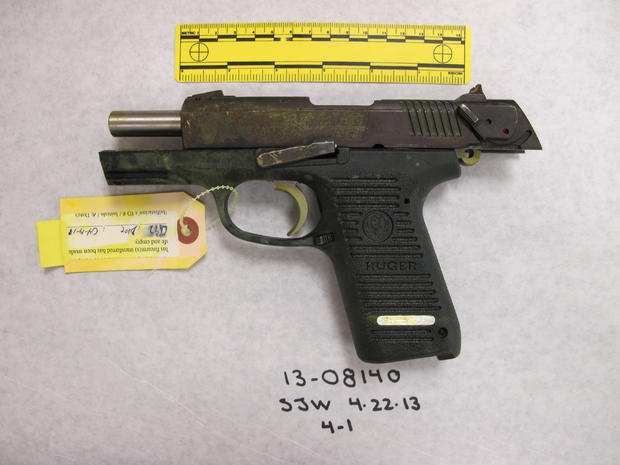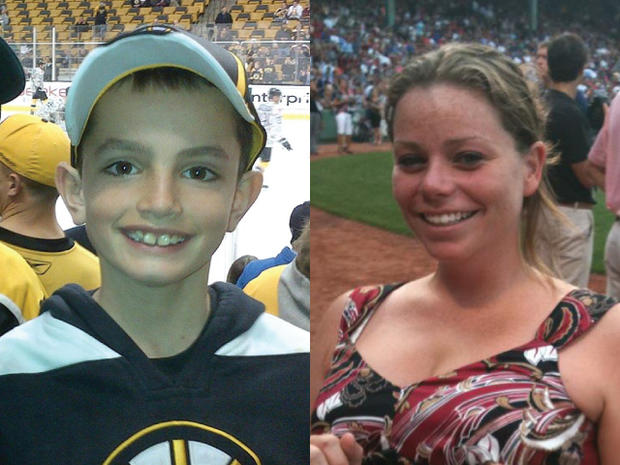5 things to know about the Dzhokhar Tsarnaev trial
Update: The jury found Dzhokhar Tsarnaev guilty of all charges in the Boston Marathon bombing.
Dzhokhar Tsarnaev's lawyer admitted during opening statements that her client participated in the bombings but said he fell under the influence of his older brother, Tamerlan, whom the defense has portrayed as the mastermind of the terror attack, and who was killed in the gun battle that followed.
Now the jury has the case to determine guilt or innocence.
If he's convicted, there would then be a second phase of the trial -- known as the penalty phase -- when the same jury would decide if Tsarnaev is sentenced to death or spends the rest of his life in prison.
Click ahead for things you may not have known about the Boston bombing trial.
The boat with a "note" inside
Boston bombing jurors got to see the boat that had been parked in a yard in Watertown, outside Boston, in which Dzhokhar Tsarnaev was caught hiding.
The red and white boat was riddled with more than 100 bullet holes, marked individually with small pieces of white evidence tape. One of the boat's two front widows is shot out almost completely, with just one shattered piece of glass remaining.
Jurors walked around the boat, taking notes, and then went two at a time onto a lift so they could look inside the vessel, which was on a trailer.
Inside the boat, called the Slipaway II, they could see the note Tsarnaev wrote on the inside walls which he denounced the U.S. for its wars in Muslim countries. The note, written in pencil, is riddled with at least ten bullet holes and stained with long streaks of blood.
The boat is considered evidence and is impounded by the government. The trial judge ruled that its current location could not be revealed to ensure the security of jurors and the defendant.
Tsarnaev's "borrowed" gun?
Prosecutors identified a Ruger handgun as the gun used by Tsarnaev and his brother to kill a Massachusetts Institute of Technology police officer as they attempted to flee the area three days after the bombings.
Stephen Silva, a friend of the defendant, testified that several weeks after he first showed Tsarnaev the gun, Tsarnaev asked if could "potentially borrow" it.
Silva said that after a few weeks, he asked Tsarnaev for the gun back, but Tsarnaev repeatedly made up excuses for why he didn't return the gun.
Silva, who was charged last year with gun possession and drug charges, said he was testifying against Tsarnaev as part of a plea agreement with prosecutors. He acknowledged that he is hoping prosecutors will recommend a sentence below five years.
Trooper testifies about tense standoff; bombs thrown
While the battle between the Tsarnaev brothers and police was still going on, trooper Robert McCarthy with the state police bomb squad arrived on the scene.
"At that time, there was multiple radio calls of 'shots fired,'" he told the court. "They're throwing bombs at us."
Two of those bombs didn't explode. McCarthy described using a robot to place them in a bomb pod. They were then taken to a safer location to be defused. The insides of the bombs were lined with BB's and filled with gunpowder, he said.
McCarthy showed the jury the devices. When asked about the unusual shape of one of the bombs, McCarthy explained: "We don't see these types of pipe bombs, usually they're straight length. We don't call these pipe bombs, it's more of an improvised grenade. When it's tossed it will stop, it will not roll away."
McCarthy also showed jurors a Tupperware container filled with explosive powder and fuses, found in the Mercedes Benz that brothers allegedly stole.
The bullet-riddled Mercedes had been abandoned a few blocks away.
A pair of bloody white gloves were found in the Tsarnaevs' Honda, which authorities say they were driving before they carjacked the Mercedes. A forensic scientist told the court that blood was from murdered MIT officer Sean Collier.
Fingerprints were found in both vehicles. The jury was told some of those fingerprints were those of Dzhokhar Tsarnaev.
Graphic testimony
Later in the trial, a medical examiner testified in graphic detail about the devastating injuries that ravaged the body of a 29-year-old woman and caused her to bleed to death on the pavement.
One juror cried and wiped her face with a tissue as the jury looked at autopsy photos and listened to the description of injuries suffered by Krystle Campbell. Judge George O'Toole Jr. would not allow the photos to be shown on public monitors, so people in the courtroom could not see the images; only the jurors saw them.
In addition to Campbell, who was a restaurant manager, eight-year-old Martin Richard and 23-year-old Lingzi Lu were killed when twin pressure-cooker bombs exploded near the finish line of the Boston Marathon on April 15, 2013.




